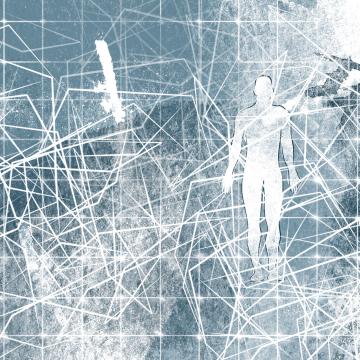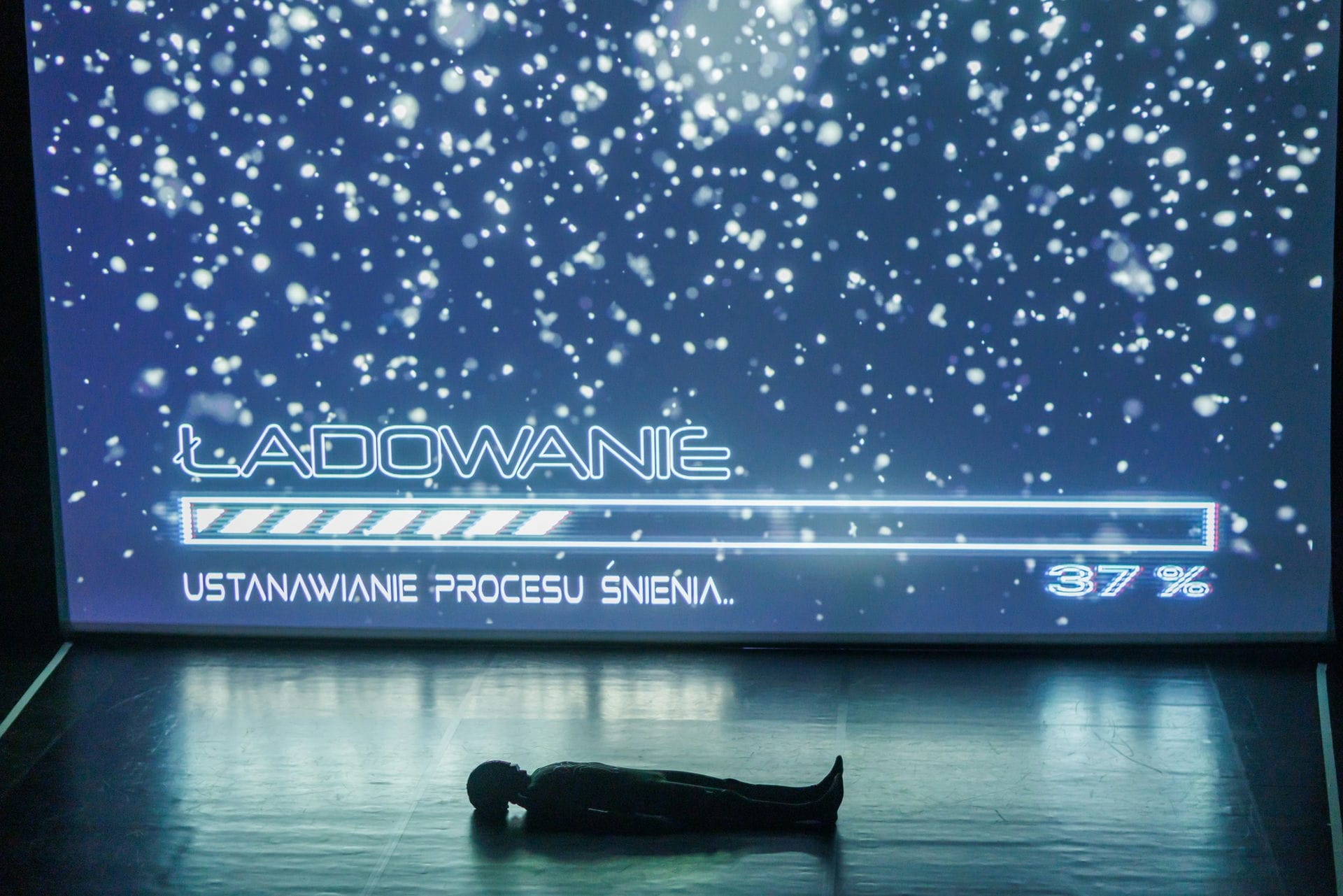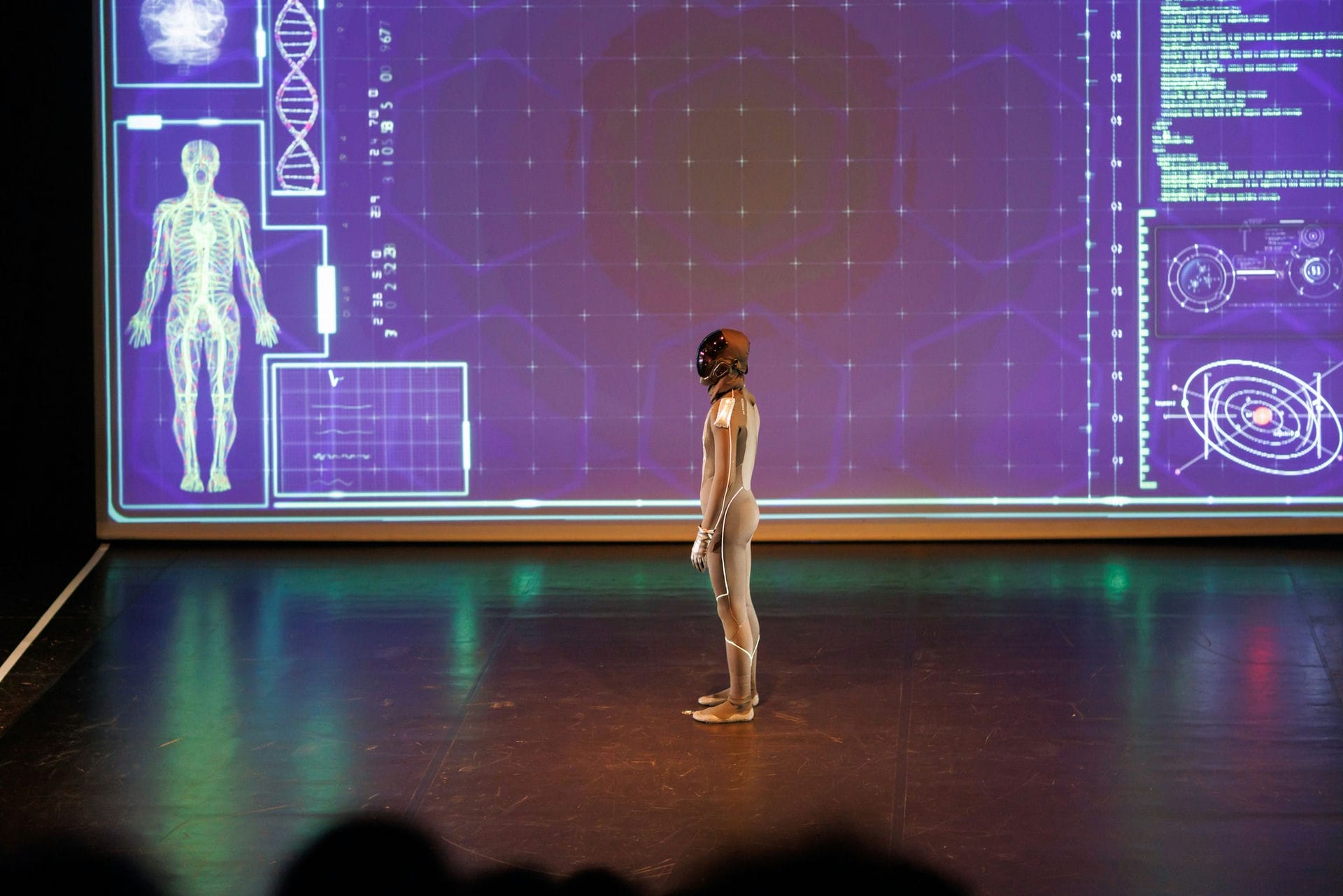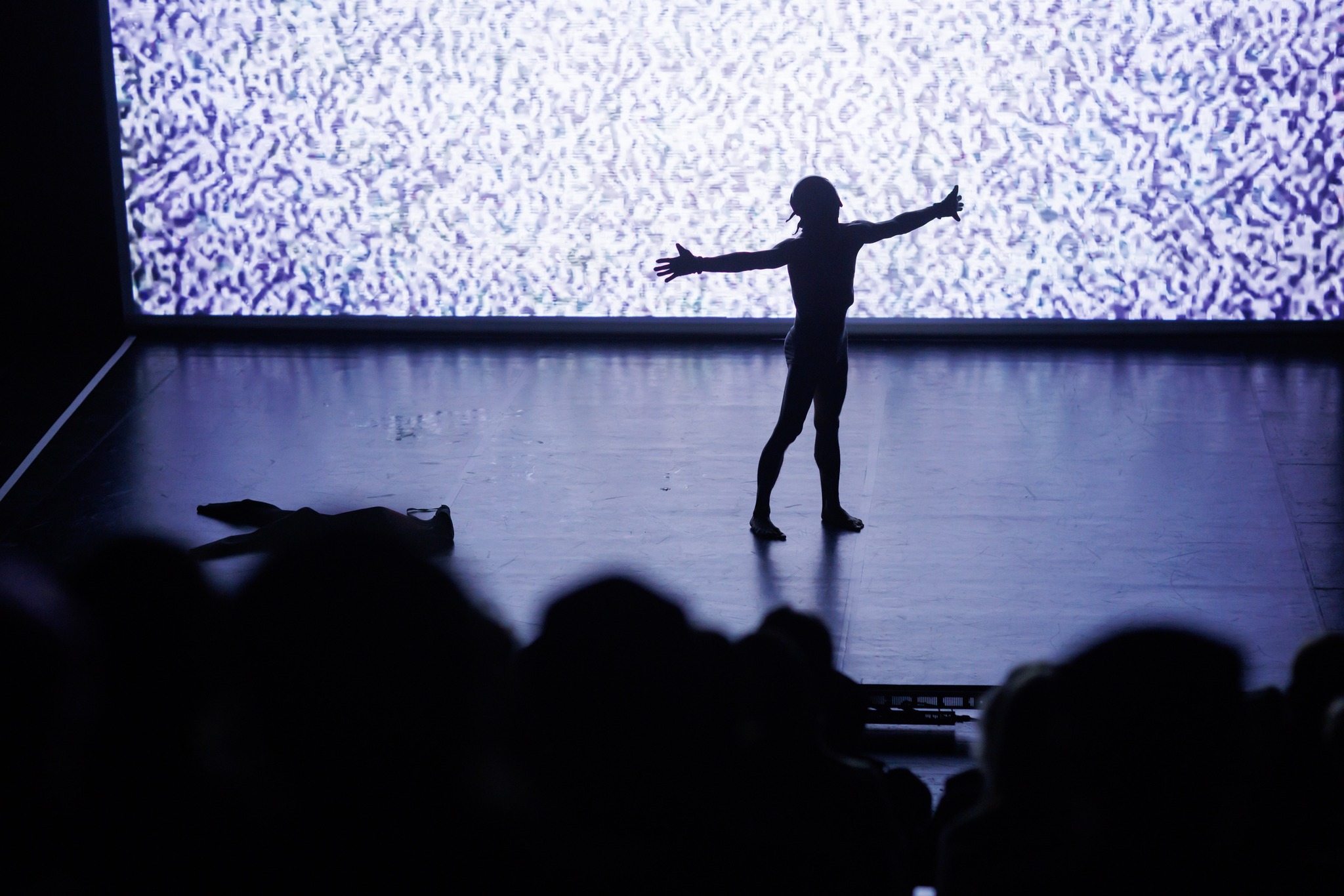
A game without a user? A review of the "Game" performance
Theatre critic Mateusz Leon Rychlak reviews the performance "Game", directed by David Lorenc.
Imagination is the enemy
of precise action.
I am free because
another brain thinks for me.
- The Great Electronics Man in the film Mr. Kleks' Travels
At what point does pure biology end and consciousness begin? Where is the boundary beyond which we can start talking about human beings? What really makes us human? These are the questions that the creators of the performance "Game", presented before the opening of the Culture Futura Biennale 2023 at the Juliusz Słowacki Theatre in Cracow.
A large part of the performance is filled with video projection, featuring various systems visualising the processes that take place in the human body, information flows, nerve impulses, imaging of the skeletal, circulatory and nervous systems, etc. These images are linked to a storyline that brings back to life an astronaut once sent on the furthest space expedition yet in search of a planet to colonise. This process is overseen by two disembodied entities, recorded in the ship's programme, which are a copy of human consciousness (with the face and voice of Antoni Milancej) and an artificial intelligence (voiced by Dominika Bednarczyk). These two entities, if they can be called that, in the shape of a marionette player, activate the various systems of the human body and brain, restoring their biological functioning. The only human being physically appearing on stage is the figure of the astronaut (Dawid Lorenc, the originator of the whole project), and on him we can observe the effects of all the actions that are programmed in the viscera of the spaceship.

The main means of expression in the performance is movement, which responds to plot events of various kinds. For most of the time it is mechanical, precise, an imitation of basic physical actions, composed with sound effects, e.g. kicking a ball, stepping, dodging a bee flying around one's head. Only in the final part of the play does this movement cease to be animated by a mind external to the character, it is the protagonist who takes control. This happens in quite dramatic circumstances. The sequence of movements that the artist performs becomes much more emotionally charged, whereas most of the poses performed so far have been representations of ordinary activities, everyday, not requiring interaction with other people. The movements are reminiscent of emotional events, dancing, hugging, moving around other people, playing as a team. Such a subtle boundary becomes a marker between a body animated by artificial intelligence and a spiritualised matter.
This boundary is also clearly marked in the music, written by Patryk Zakrocki. For most of the performance, it is associated with what is usually presented by music that introduces the atmosphere of science fiction. Computer sounds, radio waves, electronic music. The moment a human being 'appears', a change occurs, not only in the character of the music, but also in the instruments used. The sounds seem closer through the use of classical acoustic instruments. All these procedures create a clear caesura, which answers the questions I probably asked somewhere at the beginning of the creative process, and which I mentioned at the beginning of this review.

"Game" is described as an educational spectacle, but this should not be interpreted in a negative way. Its essence is not to explain the world of biology, physics, cosmology etc. directly. By showing the unbelievable level of diversity of the world in which we find ourselves, the play arouses curiosity to learn enough about it to be able to understand the various processes that govern man and nature themselves. Here, I believe, lies the advantage of this play over any other - straightforwardly depicting the workings of selected phenomena of the world around us.
The performance was staged as part of the project 'Culture Futura. Interdisciplinary Biennale of Future Art and Technology', part of which is the aforementioned exhibition of eleven artistic works using virtual reality, augmented reality and artificial intelligence techniques and alluding to the common theme of 'e-Polis - city of the future'. The exhibition can be visited in the Malopolska Garden of Arts at 12 Rajska in Cracow.

TText reprinted with permission from the website teatrdlawszystkich.eu











